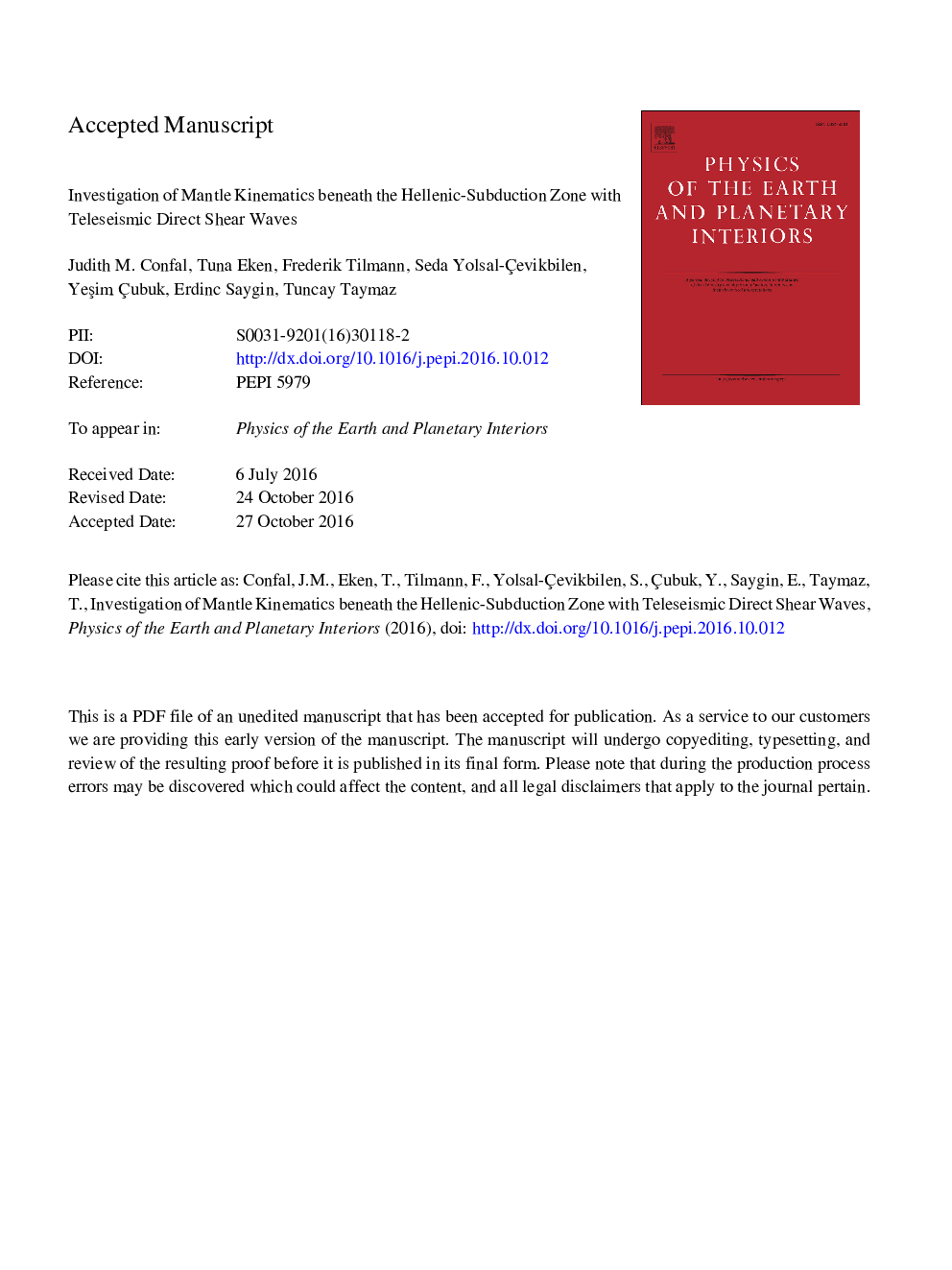| کد مقاله | کد نشریه | سال انتشار | مقاله انگلیسی | نسخه تمام متن |
|---|---|---|---|---|
| 5787329 | 1641479 | 2016 | 35 صفحه PDF | دانلود رایگان |
عنوان انگلیسی مقاله ISI
Investigation of mantle kinematics beneath the Hellenic-subduction zone with teleseismic direct shear waves
ترجمه فارسی عنوان
بررسی سینماتیک گوشته در زیر ناحیه فرونشانی هلنی با امواج برشی مستقیم
دانلود مقاله + سفارش ترجمه
دانلود مقاله ISI انگلیسی
رایگان برای ایرانیان
کلمات کلیدی
موضوعات مرتبط
مهندسی و علوم پایه
علوم زمین و سیارات
فیزیک زمین (ژئو فیزیک)
چکیده انگلیسی
The subduction and roll-back of the African plate beneath the Eurasian plate along the arcuate Hellenic trench is the dominant geodynamic process in the Aegean and western Anatolia. Mantle flow and lithospheric kinematics in this region can potentially be understood better by mapping seismic anisotropy. This study uses direct shear-wave splitting measurements based on the Reference Station Technique in the southern Aegean Sea to reveal seismic anisotropy in the mantle. The technique overcomes possible contamination from source-side anisotropy on direct S-wave signals recorded at a station pair by maximizing the correlation between the seismic traces at reference and target stations after correcting the reference stations for known receiver-side anisotropy and the target stations for arbitrary splitting parameters probed via a grid search. We obtained splitting parameters at 35 stations with good-quality S-wave signals extracted from 81 teleseismic events. Employing direct S-waves enabled more stable and reliable splitting measurements than previously possible, based on sparse SKS data at temporary stations, with one to five events for local SKS studies, compared with an average of 12 events for each station in this study. The fast polarization directions mostly show NNE-SSW orientation with splitting time delays between 1.15Â s and 1.62Â s. Two stations in the west close to the Hellenic Trench and one in the east show N-S oriented fast polarizations. In the back-arc region three stations exhibit NE-SW orientation. The overall fast polarization variations tend to be similar to those obtained from previous SKS splitting studies in the region but indicate a more consistent pattern, most likely due to the usage of a larger number of individual observations in direct S-wave derived splitting measurements. Splitting analysis on direct shear waves typically resulted in larger split time delays compared to previous studies, possibly because S-waves travel along a longer path in the same anisotropic structure. Considering the S-derived splitting measurements of this study together with earlier SKS and Rayleigh wave anisotropy modelling results we suggest that the very consistent direct S-derived fast shear wave directions can be explained by the lattice-preferred orientation of olivine in the asthenospheric mantle due to mantle flow induced by the roll-back of the slab. It is possible that a small contribution originated in the lower crust beneath the study region where anisotropic fabric might have formed in response to extension in the Miocene.
ناشر
Database: Elsevier - ScienceDirect (ساینس دایرکت)
Journal: Physics of the Earth and Planetary Interiors - Volume 261, Part B, December 2016, Pages 141-151
Journal: Physics of the Earth and Planetary Interiors - Volume 261, Part B, December 2016, Pages 141-151
نویسندگان
Judith M. Confal, Tuna Eken, Frederik Tilmann, Seda Yolsal-Ãevikbilen, YeÅim Ãubuk-Sabuncu, Erdinc Saygin, Tuncay Taymaz,
